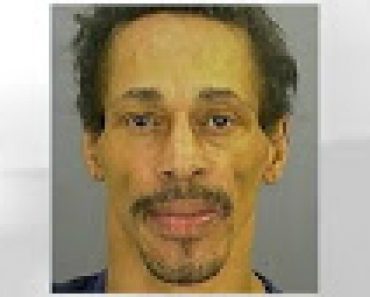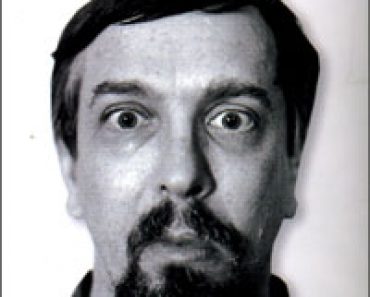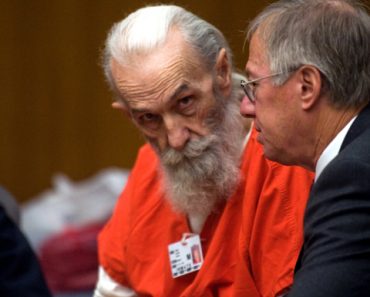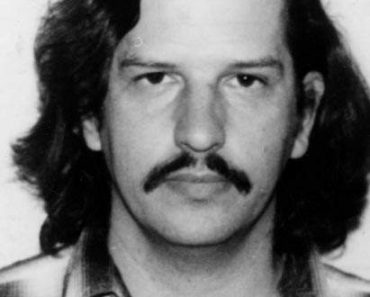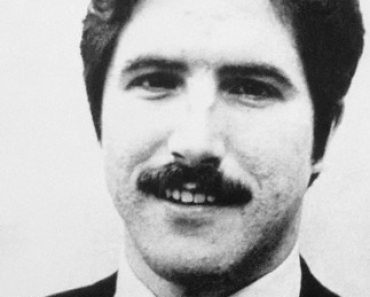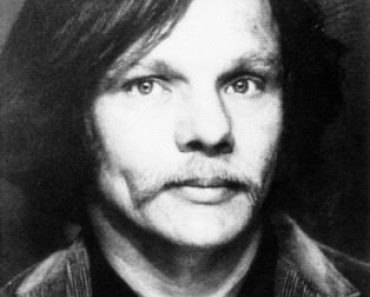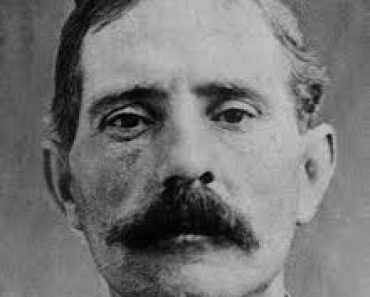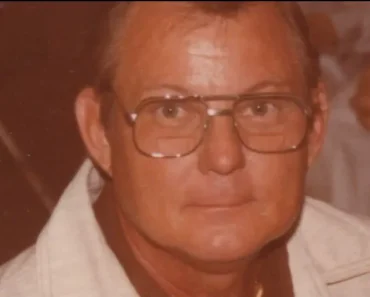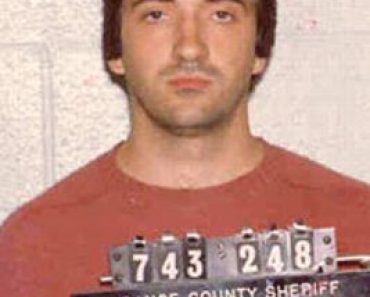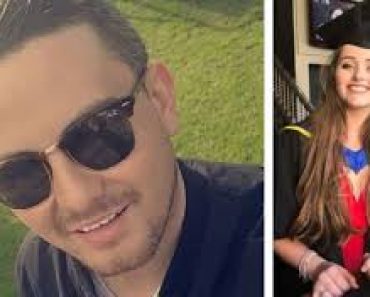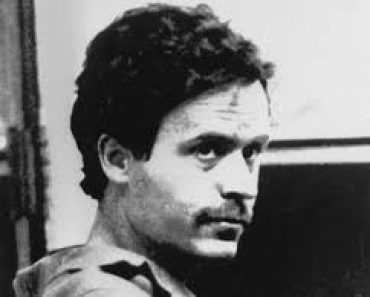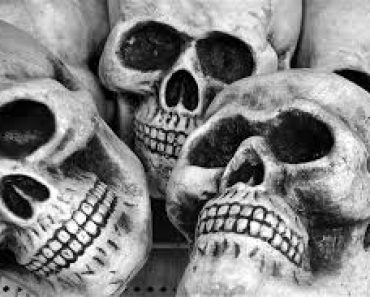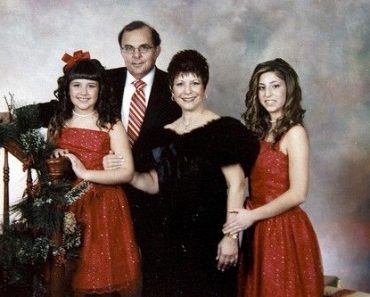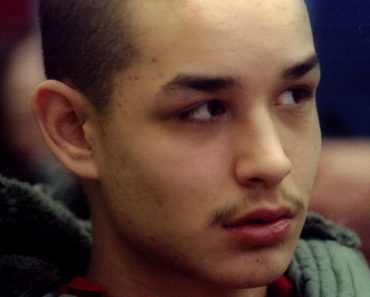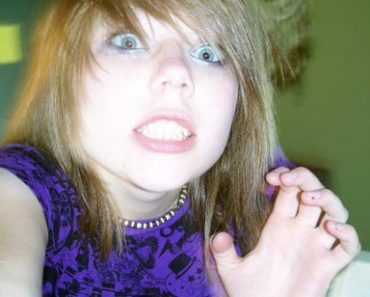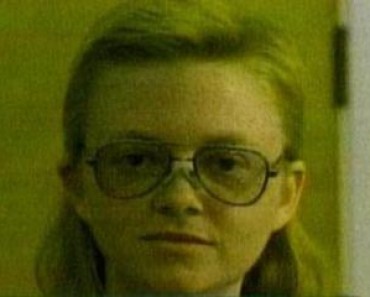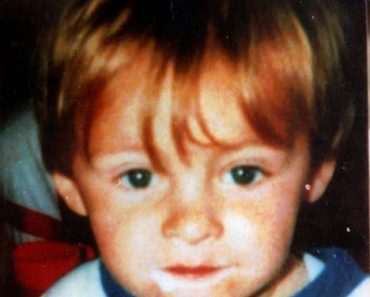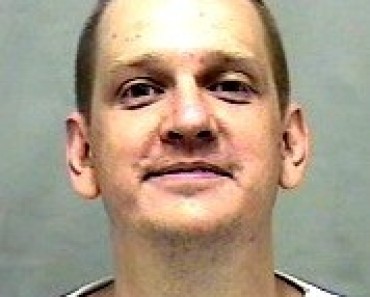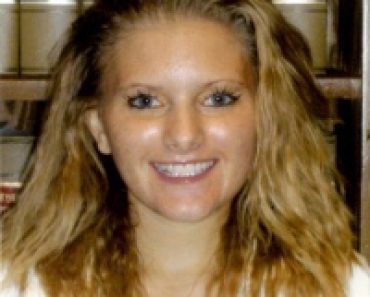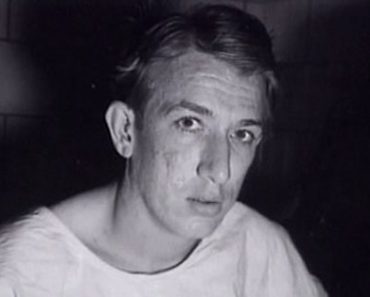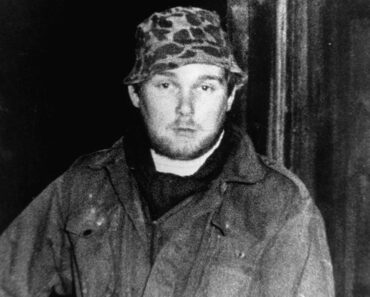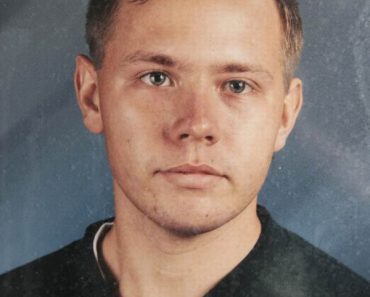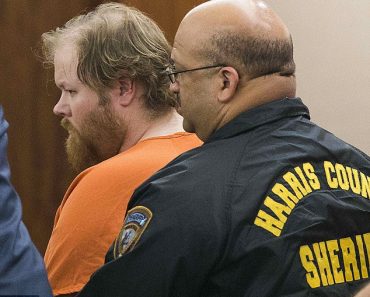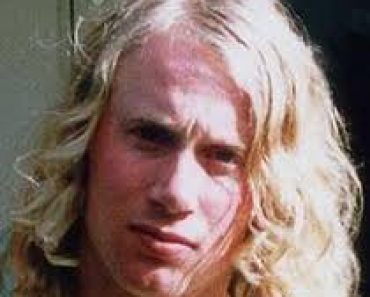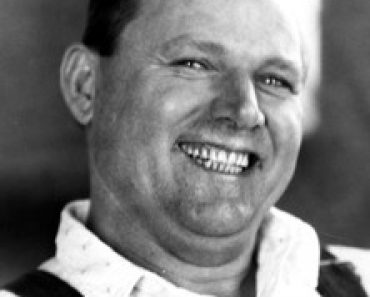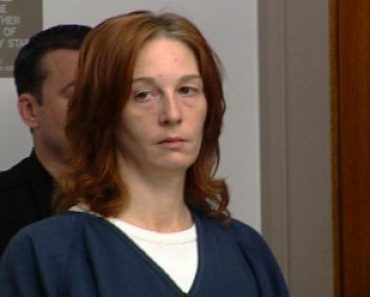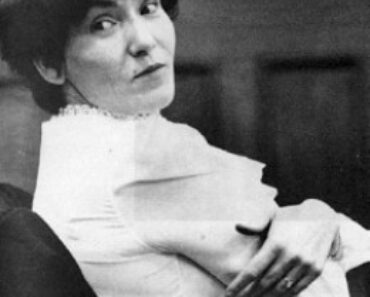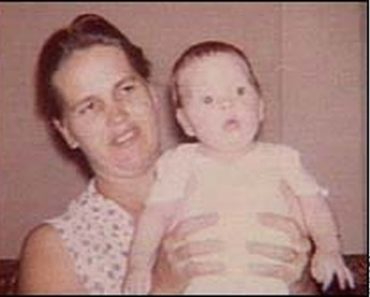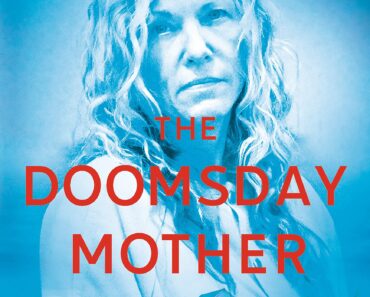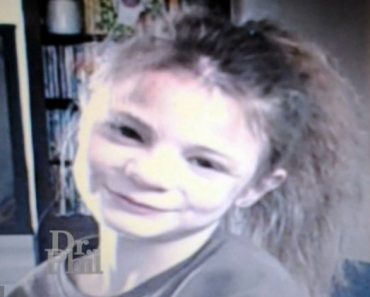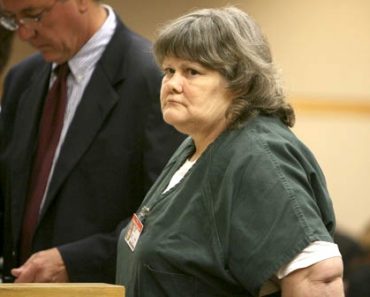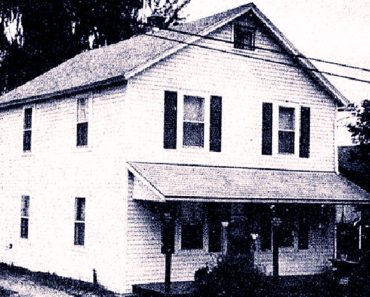The ‘Hillside Strangler’
by Marilyn Bardsley
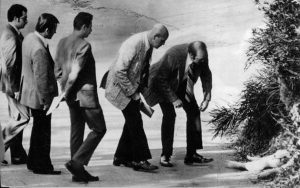
The Hillside Strangler case produced the longest trial in America at the time.
Rampage
It takes more than a few homicides to get the attention of the people in a city the size of Los Angeles. Murders are a daily occurrence, particularly when one involves a person living in a high-risk lifestyle, like a prostitute. So when three women were found strangled and dumped naked on hillsides northeast of the city between October and early November of 1977, very few people lost sleep over it. Only a couple sharp homicide detectives got nervous that this was just the beginning.
Everything changed Thanksgiving week when five young women and girls were found on hillsides in the Glendale-Highland Park area. These five young women – one of which was twelve, another only fourteen – were not prostitutes, but “nice girls” who had been abducted from their middle-class neighborhoods.
Newspapers and television stations talked of rape, torture, abduction and murder. The collective consciousness of a populace numbed by violence was suddenly and unpleasantly engaged. The city went into a panic.
Hillside Strangler
The term “Hillside Strangler” was coined by the media, even though police were convinced that there was more than one person involved. People did what they always do in a panic: they warn their children to be careful; buy large dogs; install new locks on their doors; take self-defense classes; carry guns and knives to protect themselves.
None of this seemed to work, however, since ‘the strangler’ still did not have any problems getting new victims.
On Sunday, November 20, 1977, LAPD Homicide Detective Sergeant Bob Grogan was hoping to be able to enjoy his day off when he was called to an obscure area in the hills between Glendale and Eagle Rock. As he tried with difficulty to locate the site, he thought to himself that whoever was using this area to dump bodies must be very familiar with the neighborhood to even know this place existed.
The dead girl was found naked in a modest, middle-class neighborhood. Grogan immediately noticed the ligature marks on her wrists, ankles and neck. When he turned her over, blood oozed from her rectum. The bruises on her breasts were obvious. Oddly enough, there were two puncture marks on her arm, but no signs of the needle tracks that indicate a drug addict.
As Grogan examined the scene, he saw no indication of any disturbance in the foliage nor any sign that the body had been dragged there. He made a mental note to himself that the murder occurred somewhere else and a man, maybe two men, had carried her body and dumped it there in the grass.
On The Other Side of The Hill
A few hours later that afternoon, Grogan’s partner, Dudley Varney, had been called to investigate two homicides on the other side of that same hilly area. The two dead girls had been found by a nine-year-old boy who had treasure hunting in a trash heap on the hillside. It was a pretty horrible sight, made all the more grotesque by the decay and army of insects that had taken over the flesh.
Again, there was no indication that the murders had occurred where the bodies were found, nor was their any evidence that the bodies had been dragged there. Small as the young girls were, there was the probability that more than one killer was involved in dumping their bodies on the hillside.
It did not take long to identify the girls as Dolores Cepeda, 12, and Sonja Johnson, 14, both of whom had been missing for about a week from St. Ignatius School. The girls had been last seen getting off a bus and going over to a large two-tone sedan to talk to someone on the passenger side. A person on the passenger side corroborated the theory that there were two killers, probably both men.
The next day, the first girl that Bob Grogan investigated was identified as Kristina Weckler, a quiet twenty-year-old honors student at the Pasadena Art Center of Design. As he searched her apartment at 809 East Garfield Avenue in Glendale, Grogan was overcome by sadness and, then, rage. Her effects and her diary showed her to be a loving and serious young woman who should have had a bright future ahead of her.
He could not help but think fearfully of his own teenage daughter. When Kristina’s devastated parents came from San Francisco to pick up her belongings, Grogan pledged to them that he would find her killer or killers.
The Day Before Thanksgiving
On November 23, the day before Thanksgiving, another young woman’s body was found, this time near the Los Feliz off ramp of the Golden State Freeway. Her maggot-covered body was estimated to have been there some two weeks. She had been strangled like the others, but it was not certain if she had been raped.
Some two weeks earlier, the young woman had been a vibrant and attractive blonde with a figure like a model. Jane King was twenty-eight at the time she was murdered.
The authorities lost no time in creating a task force, initially composed of thirty officers from LAPD, the Sheriff’s Department and the Glendale Police Department. Like every other task force formed in a high-profile case, the officers were soon overwhelmed with worthless tips and suggestions from well-meaning citizens.
The killers took the holiday weekend off, but that was all. On Tuesday, November 29, Grogan was called to the hills around Glendale’s Mount Washington area. The naked body of a young woman was found lying partially in the street. The ligature marks on her ankles, wrists and neck were the Hillside Strangler’s calling card.
Something Was Different
But something was different: it looked as though she had burns on her palms. Like the strange puncture marks on Kristina Weckler’s arms, it looked as though the killers were experimenting – possibly with methods of torture. There was also something else that was different – a shiny track of some sticky liquid, which had attracted a convoy of ants. If this substance was semen or saliva, there was the possibility that the killer’s blood type could be determined. Tests on semen found in the earlier victims had revealed nothing.
That same day, the young woman was identified as Lauren Wagner, an eighteen-year-old student who lived with her parents in the San Fernando Valley. Her parents had gone to bed the previous night, expecting her to come home before midnight. The next morning, they found her car parked across the street with the door ajar.
When Lauren’s father questioned the neighbors, he found that the woman who lived in the house where Lauren’s car had been parked saw her abduction. Beulah Stofer, the neighbor, said that she had seen Lauren pull over to the curb around nine o’clock in the evening.
Two men had pulled their car beside hers. There was some kind of disagreement and Lauren ended up in the car with the two men.
The Threat
Grogan went to talk to Beulah immediately. Her Doberman barked furiously at him as he went to her door. Beulah was a bespectacled asthmatic in her late fifties and almost at the point of nervous collapse. She had just had a phone call from a man with a New York accent.
“You the lady with the dog?” he asked her. When she said that she had a dog, he told her to keep her mouth shut about what she had witnessed or he would kill her. Beulah did not realize that Lauren had been abducted. She thought that she had just witnessed a quarrel and she wasn’t even sure it had been Lauren.
Beulah described the killers’ car as a large dark car with a white top. One of the men had dragged Lauren from her car into his. She heard Lauren cry out, “You won’t get away with this!”
Beulah was so terrified by the incident that she did not even tell her husband who had been home the whole time. The horror of the whole thing had thrown her into a violent asthma attack.
She was sure that there were two men: one was tall and young with acne scars; the other one was Latin-looking, older and shorter with bushy hair. She was certain that she could identify them again.
Even though Beulah claimed that she was standing at her window when Lauren was attacked, her descriptions of the men were too vivid to have been seen at such a distance. The window was a good thirty feet from the street. Grogan was sure that Beulah had really been out in her front yard and hid in the bushes when the commotion began. Otherwise, with her dog barking the whole time, she never could have heard Lauren tell her captors that they would never get away with it. Perhaps, Beulah would tell the whole truth when it and if it became necessary.
Now with the abduction of Lauren Wagner, the killers saw the whole city as their cruising ground. Nowhere was safe. At least when the crimes were confined to Hollywood and Glendale, police could intensify their efforts in those areas. Now, it was a crapshoot. Nobody knew where the stranglers would strike the next time.
Five More Victims
The rampage of Thanksgiving week threw into the spotlight three earlier murders of prostitutes or suspected prostitutes, beginning in October.
On October 17, 1977, a tall, leggy prostitute of African-American descent called Yolanda Washington was raped and strangled. Her nude body was dumped near the Forest Lawn Cemetery.
Almost two weeks later, Sergeant Frank Salerno, a detective with the Los Angeles County Sheriff’s Department, was called to the town of La Crescenta, north of the Glendale area to investigate the homicide of a woman. It was a pretty grim sight for that Halloween morning of 1977.
The naked body of the woman lay close to the curb in a middle-class residential area, covered with a tarp by the property owner so as to shield the body from the children in the neighborhood. The bruises on her neck showed that she had been strangled. She had ligature marks on both wrists and ankles as well as her neck. Insects feasted on her pale skin. On her eyelid was small piece of light-colored fluff that Salerno saved for the forensic experts. It did not appear that she had been murdered there in La Crescenta.
The body was placed deliberately where it would be found quickly. As though it was a nasty wake-up call to that respectable middle-class neighborhood. There was no indication that the victim had been dragged to the spot where she lay, so Salerno theorized that she had been carried from a car, possibly by more than one person.
Halloween Horror
She was small and thin, weighing about ninety pounds and appeared to be about sixteen years old. Her hair was reddish brown and was medium length.
The coroner determined that she had been strangled to death around midnight, some six hours or so before she was found Halloween morning. It was also clear that she had been raped and sodomized.
After a couple of days, she still didn’t match any missing person’s report. Salerno persuaded the newspapers to run a small story on her, along with a sketch and a request to contact the police if anyone recognized her. Still no one came forward to identify her.
Salerno took to the streets around Hollywood Boulevard, which was a mecca for runaways, addicts, prostitutes and the homeless. With her sketch in hand, he showed it to hundreds of street people. The name Judy Miller kept surfacing as a young destitute whore. A man named Markust Camden, who described himself as a bounty hunter, said he saw Judy Miller leave the Fish and Chips restaurant at nine p.m. on the evening before she was found dead.
The prospects for solving this particular homicide were not promising. Salerno’s only other clue, the little piece of fluff that he found on the victim’s eyelid, could not be identified.
And Yet Another
A week later, on the morning of Sunday, November 6, 1977, the naked body of another strangulation victim was found in Glendale near a country club. Salerno talked to the Glendale police and recognized the similarities between the two victims. Both had been strangled by ligature and their bodies had been dumped within six or so miles of one another. Both girls had the same five-point ligature marks (ankles, wrists, and neck). There was evidence of rape, but not sodomy, in the newest victim.
Looking at the scene where the body had been deposited, Salerno was certain that at least two men were involved. There was a sizable guardrail between the road and the spot where the body lay. It would have taken two men to lift the stocky victim over the guardrail.
This victim quickly had a name. She was Lissa Kastin, a twenty-one-year-old waitress at the Healthfaire Restaurant near Hollywood and Vine. She lived just off Hollywood Boulevard. She had made a comment to her mother than she was thinking of turning to prostitution to earn some extra money. Lissa had last been seen leaving the Healthfaire Restaurant just after nine o’clock on the night she was murdered.
Eventually, Salerno tracked down the Miller family and got a positive identification on the first victim. The family was down on its luck and had nothing to contribute about their daughter’s friends.
Two Months – Eight Victims
Until Thanksgiving week, only Frank Salerno of the L.A. Sheriff’s Department had known that a serial killer was at work. After Thanksgiving week, it was the top priority for the entire law enforcement community of Los Angeles. Eight victims in the space of two months. The investigation went into high gear, but the killer or killers took a couple of weeks off.
In mid-December, police were called to a vacant lot on a steep hillside on Alvarado Street where they found the body of Kimberly Diane Martin, a tall, blonde call-girl who had been working for the Climax “modeling agency.”
This time the police department had what seemed like two reasonably good leads. Kimberly Martin’s last client had beckoned her to Apartment 114 at 1950 Tamarind, which turned out to be a vacant apartment. The murderer had called from a pay phone in the lobby of the Hollywood Public Library on Ivar Street.
Unfortunately, nothing much came from these leads and the police did not have any immediate arrests. But things became quiet for awhile. There were no more victims in December or January.
Then in mid-February, there was another victim. On Thursday, February 16, an attractive young women named Cindy Hudspeth was murdered. Her strangled, violated body was put into the trunk of her Datsun and was pushed off a cliff on Angeles Crest.
The Hillside Strangler
The next day when the police investigated, it was clear from the ligature marks that the Hillside Strangler was at work once again. Police focused on the details of Cindy’s life in the hopes that they could determine who was with her when she disappeared.
Cindy had been a twenty-year-old clerk that everybody liked. She hoped to make enough money to go to college one day and planned to give dancing lessons to help raise the money. A vivacious young woman, she had won several dance contests. She had been last seen in her apartment building at 800 East Garfield Avenue. She had probably been headed toward Glendale Community College, where she worked nights answering the phone. Between her apartment building and the community college, Cindy had been kidnapped in the late afternoon.
Cindy Hudspeth had lived across the street from another victim, Kristina Weckler, even though the two women did not know each other. Detectives Bob Grogan and Frank Salerno both believed that there was a good chance that at least one of the killers lived in Glendale.
The Seattle Connection
The relationship between the LAPD and the LA Sheriff’s Department had been notoriously bad for many, many years. Petty squabbles, jealousies, jurisdictional and territorial issues limited cooperation among the members of these two key law enforcement agencies and were a boon to criminals who took advantage of that situation. However, in this particular case, the two key investigators — Frank Salerno of the Sheriff’s department and Bob Grogan of LAPD — worked well together and made a point of ensuring that information was shared between both large law enforcement organizations.
Despite this harmony, the investigation was going nowhere. The few clues they had produced no good suspects. They knew the kind of person they were looking for, but that wasn’t much help in a huge metropolitan area. Darcy O’Brien in his excellent book, Two of a Kind, summarizes what the forensic psychiatrists had to say: “The Strangler was white, in his late twenties or early thirties, and single, separated, or divorced — in any case not living with a woman. He was of average intelligence, unemployed or existing on odd jobs, not one to stay with a job too long. He had probably been in trouble with the law before. He was passive, cold, and manipulative — all at once. He was the product of a broken family whose childhood was marked by cruelty and brutality, particularly at the hands of women.” Armed with that information, Grogan said: “Gee, all we got to do now is find a white male who hates his mother.”
A Psychic From Berlin
One unusual twist to the investigation was the arrival in L.A. of a psychic from Berlin. Grogan was polite, but unenthusiastic when the psychic wrote in German what they should be looking for: Two Italians, Brothers, Aged about thirty-five.
Months passed and the Hillside Strangler seemed to have retired. The activities of the task force wound down and detectives began to work on other cases.
On January 12, 1979, the police in Bellingham, Washington were told that two Western Washington University students were missing. The two women roommates, Karen Mandic and Diane Wilder, were not the type of people to take off irresponsibly without telling anyone. When Karen didn’t show up for work, her boss became worried. He remembered that she had accepted a house-sitting job in a very wealthy Bayside neighborhood from a security guard friend of hers.
Bellingham police contacted the security firm, who in turn called the security guard to ask him about the supposed house-sitting job for one of the company’s clients. The security guard claimed he knew nothing about it and had never heard of the two missing women. The security guard told his employer that he had been at a Sheriff’s Reserve meeting the night the two women disappeared.
Two More Missing Women
When police found out that the security guard was not at the Sheriff’s Reserve meeting as he had told his employer, they decided to contact the security guard directly. They found him to be a friendly young man who had skipped the Sheriff’s meeting because it was on first aid, which he already knew.
The police had no indication that the two women had met with foul play. It was very possible that they had just gone away for the weekend and had forgotten to tell Karen’s employer. However, Terry Mangan, the former priest who was the new Bellingham police chief, was not comfortable with that explanation.
When he visited the girls’ home, he found a hungry cat — an unusual situation for an otherwise very pampered pet. In their home, he found the address of the Bayside home where the two of them were to house-sit. A close look at the records of the security firm brought up the name of that same security guard in conjunction with the address in which the girls were to house-sit.
Also, police learned that the security guard had used a company truck the night the women disappeared, supposedly to take it into the shop for repair. However, the guard never took the truck in for servicing.
Chief Mangan was becoming increasingly concerned about the safety of the two missing women. He asked the Highway Patrol to check on sites that might be used to dump bodies or abandon cars. “I think we have to consider this a kidnapping and maybe a homicide.”
The Security Guard
The next step was for the police to search the Bayside address where the girls were supposed to house-sit. They found a wet footprint in the kitchen that had been left a few hours earlier, but there was no sign of the girls or Karen Mandic’s car.
Police found a neighbor who had been contacted by a security guard and asked to check on the house each day except for the night that the girls disappeared. That night, the guard told her, there was special work being done to the alarm system and he didn’t want her to be taken as an intruder.
Next, Chief Mangan enlisted the help of the news media, requesting that they describe the missing women and car to their audiences. Shortly thereafter, a woman called about a car that had been abandoned near her home in a heavily wooded area.
Inside the car were the bodies of Karen Mandic and Diane Wilder. Both had been strangled. Other bruises suggested that they had been subjected to other injuries as well.
While the missing women were sent to the morgue, Chief Mangan ordered that the security guard be picked up for questioning. They needed to proceed cautiously since this suspect was a trained security officer. As it turned out, the security guard gave them no trouble whatsoever when they picked him up.
He was a handsome, friendly, intelligent and articulate husband and father by the name of Kenneth Bianchi.
Meeting Kenny
Kenneth Bianchi was almost six feet tall and was a trim, muscular man. His dark hair was well groomed and he wore a moustache. He lived with a long-time girlfriend, named Kelli Boyd, and their infant son. Kelli could not believe that someone as kind and gentle as Kenny could be a suspect in a murder case. Nor could Kenny’s employer, who considered him a valuable and responsible member of his staff.
The Bellingham police mounted a first class investigation of all the forensic evidence. They were exceptionally thorough in the handling of every hair and fiber. Pubic hairs fell from Diane Wilder’s body as they lifted it from Karen’s car. The Bellingham police had a white sheet ready to catch any stray, unattached fibers or hairs than could have easily slipped away.
More pubic hairs were found on the steps at the Bayside home. Fibers from the carpets of that home matched the fibers found on the dead girls’ shoes and clothes. Would these hairs and fibers conclusively link Kenny to the murdered girls? The answer would take several days to determine.
Meanwhile, the police wanted to keep Kenny under lock and key. This was made easier when they found stolen goods in his home — items stolen from job sites he had been managing.
Chief Mangan remembered the Hillside Strangler case in Los Angeles. Since Kenny had lived in L.A. before he had come to Bellingham, Mangan had calls placed to the police in L.A. and Glendale and to the L.A. Sheriff’s Office.
Connecting The Dots
Detective Frank Salerno responded to the Bellingham police call. Suddenly everything made sense to Salerno. The addresses of Cindy Hudspeth and Kristina Weckler on East Garfield and the client Kimberly Martin visited on Tamarind matched Kenny’s places of residence during the times of the murders. He lost no time getting to Bellingham to assist the police there in the investigation. He left his partner, Peter Finnigan, to work with Grogan and others on uncovering Bianchi’s activities when he lived in L.A.
Piece by piece, the evidence mounted that Kenny Bianchi was at least one of the Hillside Stranglers. The jewelry that was found in Bianchi’s home matched the description of jewelry that was worn by two of the victims: Kimberly Martin’s ramshorn necklace and Yolanda Washington’s turquoise ring. And the hair and fiber evidence further substantiated his guilt.
A Born Loser
Kenneth Alessio Bianchi was born May 22, 1951 in Rochester, New York. His biological mother was an alcoholic prostitute who gave him up at birth. Three months later, Frances Bianchi and her husband, a manual laborer in the American Brake-Shoe foundry, adopted him.
Darcy O’Brien describes him as a born loser: “Kenny appears to have arisen from the cradle dissembling. By the time he could talk, Frances knew she was coping with a compulsive liar, and his childhood unfolded as one of idleness and goldbricking. When he was five and a half, Frances became worried by his frequent lapses into trancelike states of daydreaming; she consulted a physician. The doctor, hearing that little Kenny’s eyeballs would roll back into his head during these trances, reached a diagnosis of petit mal seizures. But they were nothing to worry about. He would grow out of them.”
Despite his IQ of 116 and artistic and verbal gifts, he was a chronic underachiever and his grades were erratic. He was prone to temper tantrums and was quick to anger. Frances took him to a psychologist, who decided that Kenny was overly dependent upon his mother.
With significant financial sacrifice, she sent him to a Catholic elementary school where he did well in creative writing. Mr. Bianchi died of a heart attack when Kenny was thirteen and Frances had to go to work to support the two of them. Kenny went to a public high school where he was polite and neat, avoiding all of the social turmoil that caught up so many young people in the late 1960’s.
The Hillside Strangler
“Bianchi set high standards for his women, which they repeatedly failed to meet. His Catholic education served him here in a twisted way. He was able to confuse ordinary women with the Virgin and could be moved to bitter disappointment, even anger and fury, at their human frailties. Denying female sexuality even as he was attracted to it, he objected to V-neck sweaters and tight jeans and asked absolute fidelity in return for outwardly absolute devotion. Yet he always dated several girls at once and did not require of himself comparable standards of purity.” (O’Brien)
He married a young woman his age when he graduated from high school in 1971, but neither of them was mature enough to make the marriage last. Eight months into the marriage, she packed up all of their goods, left him and filed for an annulment. Kenny was crushed. He felt betrayed and used.
When he got over the pain, he started going to a community college to take courses in police science and psychology, but did not do particularly well and finally dropped out. He was rejected when he applied for a job in the sheriff’s department. He drifted into a job as a security guard, which allowed him to steal things, which he then gave to his girlfriends. The stealing caused him to change jobs a number of times and he realized that he wasn’t going anywhere in Rochester.
Kenny left Rochester in late 1975 when he was twenty-six and went to live in Los Angeles. He started out living with his older cousin, Angelo Buono. At first he was seduced by the uninhibited California culture where sex and drugs were freely available. Eventually, he got tired of that and started to settle down.
Kenny Settles In
His first love was police work, but there were no openings available in the Los Angles Police Department and the Glendale Police Department turned him down. Eventually, he got a job working for a title company and used his first paycheck to get an apartment at 809 East Garfield Avenue in Glendale and a 1972 Cadillac sedan, overextending himself financially in the process. Kenny was never strong on financial responsibility.
There were a number of young women who lived in his apartment building. One of them, Kristina Weckler, tried to ignore his advances, but others were more receptive. He moved in with Kelli Boyd, a woman he had met at work. In May of 1977, she told him she was expecting his child.
He wanted to marry Kelli, but she was not sure that she wanted to accept the offer. While Kenny was very kind to her, he had some serious faults. He was very jealous, he was immature and he lied. Kenny lost his job over some pot that was found in his desk, but he was able to get another similar job in downtown L.A. He and Kelli moved to an apartment at 1950 Tamarind Avenue in Hollywood.
As a sideline, Kenny had set himself up as a psychologist with a phony degree and set of credentials that he had fraudulently obtained. He rented some office space from an unsuspecting legitimate psychologist. Fortunately, very few people came to see him for help. When Kelli found out about the counseling service, she was angry.
Kenny Gets Passed By
During October and December of 1977, the city of Los Angeles was panicked by news of the Hillside Strangler, but this had little effect on the relationship of Kelli and Kenny. When Kenny started coughing and having difficulty breathing, Kelli insisted that he go to a doctor. He told her that he had lung cancer and was going to have to take radiation and chemotherapy to save his life. It was a lie.
Kelli was traumatized by the news, but did her best to keep his spirits up. Kenny started to miss work because he claimed that the therapy was making him ill. One day when he was home sick from work, detectives came to question him about one of the Strangler murders that may have taken place in his apartment building. The detectives were favorably impressed with Bianchi and did not consider him a suspect.
Kenny asked to participate in LAPD’s ride-along program, which let civilians go along in patrol cars as a kind of community education program. Ken did nothing but talk about the Strangler murders.
The relationship between Kenny and Kelli became tense. She would often go to stay with her brother, but would always go back to Kenny. In February, their son Sean was born. For awhile, things were better between them, but the old problems surfaced once again.
The Hillside Strangler
Ted Schwartz in The Hillside Strangler summarizes how Kelli viewed the difficulties: “Ken was irresponsible about work and about money. He would goof off, going over to play cards with Angelo after calling in sick. He owned a used Cadillac, then couldn’t make the payments. She had hoped that the baby would cause him to have a sense of purpose, to encourage him to change his ways, but it didn’t.
“Perhaps Los Angeles was the problem. Everything was a hustle. People had no depth, no values, no integrity. Ken did. He was a very moral man, yet he was young and easily influenced by others. He desperately wanted approval, and apparently he didn’t get it from just doing his job and following the work ethic. Whatever the case, Kelli realized that they were finished in that city.”
Kelli went back home to Bellingham to start over. Her parents and old friends were there to help. Ken was devastated by the decision. Once again, his woman abandoned him. Once she was gone, he wrote to her constantly. Finally, she agreed to give him another chance and he drove to Bellingham in May of 1978.
The Hunt Continues
The police in Los Angeles released a photo of Bianchi to the news media and received a call from a lawyer named David Wood. Wood had rescued one of two girls, Becky Spears and Sabra Hannan, from Kenny Bianchi and his cousin, Angelo Buono who had forced the young women into prostitution by threats and brutality.
While Salerno was in Bellingham, Grogan and Salerno’s partner, Pete Finnigan, went to have a little chat with Angelo Buono. Buono was an ugly man in his forties with dyed black hair, poor teeth and a nose that dominated his face. The detectives had a strong hunch that this Angelo character was the other Hillside Strangler.
Meet Cousin Angelo Buono
Angelo Buono is an ugly man physically, emotionally and intellectually. He is coarse, vulgar, selfish, ignorant and sadistic. He was also a big hit with the ladies and called himself the “Italian Stallion.” He had been married several times and had a number of children, all of whom he abused at least physically and sometimes sexually.
He was born in Rochester, New York, on October 5, 1934. When his mother and father got a divorce, he moved with Jenny, his mother and his older sister, Cecilia, to the south part of Glendale, California, in 1939. His mother supported the family by doing piecework in a shoe factory. Angelo was brought up Catholic, but neither his religion nor his public education had much impact on him. He remained uneducated throughout his life, spiritually, morally and academically.
Despite his need for sex and the practicality of occasionally being decent to a woman in order to get as much as he needed, he has a deep loathing for women and a desire to humiliate and injure them. He called his mother a “cunt” and a “whore” to her face, but was emotionally tied to her until her death in 1978. Even as a fourteen-year-old, he boasted to his friends about raping and sodomizing girls.
It’s not surprising that Angelo got in trouble with the law. He was sent to the Paso Robles School for Boys after he was convicted for grand theft auto. His proclaimed hero and role model was the notorious rapist, Caryl Chessman. “Chessman had demonstrated the possibilities of a police ruse. The red light he had attached to his car enabled him to con lovers parked in the hills of Los Angeles into opening their car windows and doors to him. They took him for a policeman. Showing a .45, Chessman would force the girl into his car, drive her to another secluded spot, and usually, make her perform oral sex. To Angelo he was a heroic combination of guts and brains.” (O’Brien).
Angelo Buono Marries
Angelo knocked up a girl from his high school girl in 1955 and married her. He left her less than a week later. Geraldine Vinal gave birth to Michael Lee Buono in 1956. Angelo refused to give her a cent for his support and refused to let the boy call him Dad. Angelo was in jail again for car theft when Michael was born.
At the end of 1956, Angelo had sired another son, Angelo Anthony Buono III. In 1957, he married the mother, Mary Castillo, who then gave birth every year or two: Peter Buono in 1957; Danny Buono in 1958; Louis Buono in 1960; Grace Buono in 1962.
In 1964, Mary filed for divorce because of his violence and perverse sexual needs, plus she got tired of always being called a cunt. Darcy O’Brien recounts a night in their first year together when Angelo tied Mary spread-eagle to the bedposts and raped her so violently she was afraid that he was going to kill her. “…her pain seemed to give him his greatest pleasure, and when she failed to respond to his pinches and slaps and pile-driver poundings, he would tell her she was a ‘dead piece of ass.’ Nor did she share his passion for anal intercourse. But Angelo was not a man to be denied. Although he never drank, he beat and kicked her when she failed to please him, and far from caring whether the children witnessed the beatings, he seemed to want them to watch.”
Angelo again successfully avoided paying any child support and Mary went on welfare to feed the children. She went to see Angelo about reconciliation, but he handcuffed her, shoved a gun to her stomach and threatened to kill her. That was the last time she thought about reconciliation with Angelo Buono.
Angelo Buono
In 1965, Angelo started to live with a 25-year-old mother of two children named Nanette Campina. With Nanette, he had Tony in 1967 and Sam in 1969. She was treated just as well as Mary was, but she stayed with him because he made it clear that he would kill her if she didn’t. By 1971, Nanette decided to risk everything to get away from Angelo, who had begun to abuse her fourteen-year-old daughter. “She needs breaking in,” Angelo said. Angelo bragged to his friends that he’d raped his stepdaughter and then turned her over to his sons for their pleasure. True or not, Nanette took her children and left the state for good.
In 1972, Angelo married Deborah Taylor on a whim, but they never lived together and never got around to getting a divorce.
By 1975, Angelo had built himself a reasonable reputation as an auto upholsterer. He bought a place at 703 East Colorado Street for his residence and his upholstery shop. He had no use for employees, so the new place gave him the privacy to do any horrible thing he wanted.
Through some streak of perversity, young girls were attracted to Angelo. He was cocky, independent, direct and very, very much in-charge. He became a magnet for teenage girls in the neighborhood. They were usually naïve and had no idea about sex, so he had no trouble convincing them that his outrageous demands were normal.
Enter Cousin Kenny
In late 1975, when cousin Kenny Bianchi arrived, he found Angelo with dyed black hair, gold chains around his neck, a large gaudy turquoise ring on his finger, red silk underwear and a virtual harem of jail bait aged girls.
Angelo provided a strong role model for the easy-going Kenny. He taught Kenny how to get a whore free by flashing a badge in her face after he got what he wanted. “You can’t let a cunt get the upper hand,” he instructed Kenny. “Put them in their place.”
When Kenny was short of money, Angelo came up with the idea of getting some girls to work for them as prostitutes. Kenny’s charm could be used to recruit the girls and Angelo’s connections could be used to get the customers. Two teenage runaways, Sabra Hannan and Becky Spears fell under their influence. Once under their control, the girls were forced to prostitute themselves or be subjected to severe physical punishment. They were virtually being held prisoner.
Eventually, Becky happened to meet lawyer David Wood, who was appalled at their plight and arranged for her to escape from the city. When Angelo understood what happened, he threatened David Wood. Wood had one of his clients — a mountain of a man — call on Angelo to gently persuade him not to threaten Wood any more. It worked.
Emboldened by Becky’s escape, Sabra ran away from Angelo and Kenny a short time later. With his pimping income gone, Kenny missed payments on his Cadillac, which was eventually repossessed.
Impersonating The Law
They had to find more teenage girls. Impersonating police officers, they tried to abduct one girl until they found out that she was Catherine Lorre, the daughter of Actor Peter Lorre. Eventually they found a young woman and installed her in Sabra’s old bedroom. Also, they bought from a prostitute named Deborah Noble a “trick list” with names of men who frequented prostitutes.
Deborah and her friend, Yolanda Washington, delivered the trick list to Angelo in October of 1977. Yolanda happened to mention to Angelo that she always worked on a certain stretch of Sunset Boulevard. When Angelo and Kenny found that Deborah had deceived them about the list, they decided to take out their rage on Yolanda, since they didn’t know how to find Deborah Noble.
Yolanda Washington was their first kill. The Hillside Strangler found life.
Now all of Angelo’s and Kenny’s kills were being immortalized in Kenny’s Bellingham jail song.
Wonderland
Kenny could be called a lot of bad things, but stupid wasn’t one of them. Locked up in the Whatcom County Jail in Bellingham, he had lots of time and motivation to use his gray cells. Already an accomplished liar, he convinced Dean Brett, the lawyer appointed by the court to represent him, he was suffering from amnesia. Brett was so concerned about Kenny trying to commit suicide that he had a psychiatric social worker called in to talk to Kenny.
The psychiatric social worker could not comprehend how such a mild-mannered, considerate person could have strangled two women unless he was suffering from a multiple personality disorder. Kenny got the message and crafted a wonderful scam, using his sprinkling of psychology from college and whatever he gleaned from seeing the movie classic, The Three Faces of Eve, years before.
Then Kenny really got lucky. The movie Sybil, another story of multiple personalities, was being shown on television just before Kenny was to be interviewed by Dr. John G. Watkins, an expert on multiple personalities and amnesia. This was the first step in an insanity defense, so Salerno and Finnegan caught a plane to Washington State.
Kenny was very well prepared for his performance. Shortly after Dr. Watkins believed that he had hypnotized Kenny, Kenny went into his evil persona routine. It was Steve Walker — Kenny’s supposed alter ego — who killed the girls in Los Angeles with his cousin, Angelo. Steve also made Kenny strangle the two women in Bellingham.
Kenny Played Insane
Despite Kenny’s preparations, he slipped up a number of times when he was pretending to be Steve and referred to Steve as “he” when it should have been “I.” Salerno picked up these slips immediately, but Dr. Watkins did not seem to notice.
Dismayed that Dr. Watkins was completely falling for Kenny’s act, Salerno called Grogan to tell him what was going on. Grogan answered, “Okay, I got a great idea. The judge says to Bianchi, ‘Mr. Bianchi, I tell you what I’m going to do. I am going to let Ken off. Ken is acquitted. But Steve gets the chair.'”
Distressing as it was for the detectives to watch Kenny create this insanity defense, it did have the advantage of implicating Angelo.
Later, Salerno presented a photo lineup to Markust Camden, the man who had seen Judy Miller get into a car the night she died. He picked out Angelo from the photo lineup immediately, but did not recognize Kenny. The only downside to this positive identification was that Markust had checked himself into a mental hospital for depression — something that a defense lawyer would use to try to discredit Markust’s testimony.
Grogan had a similar experience when he showed the photo lineups to Beulah Stofer, the woman who had seen Lauren Wagner abducted. She selected Bianchi and Buono right away.
When Bianchi’s lawyer indicated that Dr. Watkins’s testimony would be the basis for Kenny filing a plea of not guilty by reason of insanity, the court brought in additional expertise. Dr. Ralph B. Allison, a psychiatrist who was expert on the subject of multiple personalities, talked with Kenny.
Kenny Caught Faking
Dr. Allison was even more taken in than Dr. Watkins was by Kenny’s now-practiced performance. According to Darcy O’Brien, Dr. Allison seemed to be frightened by the threatening persona of Steve that Kenny created for him.
Salerno thought the name of Kenny’s evil persona sounded familiar. In going through Kenny’s papers, they found it. Thomas Steven Walker was the name on a letter Bianchi had signed to apply for a California State University diploma that he would use to fraudulently offer psychological counseling services.
The prosecution had no intention of letting Kenny get away with his insanity defense. Dr. Martin T. Orne, a major authority on hypnosis, was called upon to determine if Kenny was faking. Dr. Orne had developed procedures by which he could determine whether a subject was actually hypnotized or was just pretending to be. Kenny’s responses to three out of four tests proved that he was faking.
Dr. Orne had another little trap for Kenny. He told Kenny that there might be a problem with the diagnosis of multiple personalities. “That’s pretty rare for there to be just two [personalities],” Dr. Orne told him. Usually, there were three and often, many more than that. “Dr. Orne wanted to establish that Kenny was reacting to cues and clues thrown out by doctors. If Kenny was faking multiple personality disorder, he would find a way to invent a third personality.” (O’Brien)
Not one to disappoint the doctor, Kenny had been listening closely and quickly invented a new persona named Billy. Soon there were two new additional personalities to please Dr. Orne. Kenny’s head was getting crowded.
Kenny Found Competent
The prosecution also brought in Dr. Saul Faerstein to interview Kenny. Faerstein did nothing to coddle Kenny and Kenny became worried that his performance was not playing to a receptive audience this time.
When Dean Brett presented the findings of Drs. Watkins and Allison to support Kenny’s insanity defense, the prosecution brought forward Drs. Orne and Faerstein, both of whom stated that Kenneth Bianchi was competent to stand trial.
“The Los Angeles County District Attorney’s Office offered Kenny a deal. If he plead guilty to the Washington murders and to some of the Hillside stranglings, he would get life with the possibility of parole and he would be able to serve his time in California, where the prisons were supposedly more humane than in Washington. In return, Bianchi was to agree to testify truthfully and fully against Angelo Buono. For Kenny Bianchi, the choice was between death in Washington or life in California.” (O’Brien)
Kenny Turns On Cousin Angelo
Kenny agreed. Now the Los Angeles detectives got a crack at him to see if he would provide credible testimony. A number of investigators, including L.A. County deputy district attorney Roger Kelly, participated in the interviews. They all hoped that the interviews would produce information that would help convict Angelo. In California at that time, a person could not be convicted only on the testimony of an accomplice. However, if other evidence confirmed the accomplice’s testimony, it could be used for conviction.
Kenny described how he and Angelo pretended to be policemen. They had fake badges to support that charade. With the victims who were prostitutes, it was surprisingly easy for them to convince the victims to get in the car. The “nice” girls were much harder to manipulate.
An important moment in these interviews came when Salerno asked Kenny what type of material was used to blindfold Judy Miller. Kenny thought it was foam that Angelo used in his auto upholstery business. The little piece of fluff that Salerno had found on the dead girl’s eyelids could be just the kind of corroborating evidence they needed to nail Angelo.
Salerno also found out that the hillside dump sites for the victims was selected because Angelo was familiar with that area since one of his girlfriends had lived around there. The investigators also learned about their attempt to pick up Peter Lorre’s daughter.
Kenny Tells All
Kenny went on and on, describing each murder in detail as though it was cocktail conversation. There was no remorse nor any concern about the victims as human beings. He answered the mystery of the long, torturous death of Kristina Weckler by gas asphyxiation. This murder was so horrible that even Kenny didn’t want to talk about it. “She was brought out to the kitchen and put on the floor and her head was covered with a bag and the — pipe from the newly installed stove, which wasn’t fully installed yet, was disconnected, put into the bag and then turned on. There may have been marks on her neck because there was a cord put around her neck with a bag and tied to make more complete sealing.” It took about an hour and a half of suffering before she died.
Eventually, the reality of his situation dawned on him and Kenny looked to place the blame on someone else. His lawyer, armed with the evidence against him, convinced Kenny that he had no choice but to admit his guilt and accept punishment.
Kenny was ordered to serve two life sentences in the state of Washington. He was immediately transferred to California where he was sentenced to additional life terms. He was looking at thirty-five years in California prisons and additional time in Washington.
The Hillside Strangler
Angelo Buono was arrested on October 22, 1979, shortly after Kenny described his cousin’s involvement in the crimes. Bob Grogan had the pleasure of arresting Angelo. Later, they found Angelo’s wallet, which clearly showed the outline of the police badge he had used to get his victims to cooperate with him.
But the prosecutorial environment in California was going against bringing Angelo to trial. The DA had dropped the five California murders charges against Kenny Bianchi so that he no longer had the threat of the death penalty hanging over him. There was less incentive for Kenny to cooperate.
Also, Kenny was becoming unmanageable. The police in California hated him and made it clear. Kenny could not accept their disapproval and started to make up stories to exculpate himself. He dreamed up a second man who was responsible for the killings.
Eventually, he started to feel guilty for implicating Angelo. He began to change his story about Angelo’s involvement. His credibility as a witness against Angelo was virtually destroyed.
Very much in the back of Kenny’s self-serving performances was the prisoner code — death to informers. If acting like a nut case allowed Angelo to go free, Kenny wouldn’t be targeted as a “snitch.” Whereas if his testimony put his cousin in jail, Kenny’s existence in prison would be jeopardized.
As bizarre as Kenny’s state of mind was, it did not compare with that of his creative girlfriend, Veronica Compton. She was supposedly writing a play called The Mutilated Cutter about a woman serial killer. She wanted desperately to talk to him to understand better the mind of a murderer.
Love At First Sight
Veronica fell in love with Kenny Bianchi immediately.
Kenny saw opportunity in this relationship. He made a startling proposal — one that could, if successful, grant him the freedom to spend his life with her. If she could just go to Bellingham and strangle a girl to make it look like the same man who killed Karen Mandic and Diane Wilder. Maybe even plant semen on the murdered girl.
It was one hell of a favor to ask, but Veronica agreed immediately.
Kenny was a non-secretor, which meant in the days before DNA testing that his blood type could not be determined from his semen. Kenny packed Veronica off to Washington with a fresh load of his semen in a plastic glove.
Once Veronica got into this project, it was a bit more intimidating than it seemed in the planning. When she arrived in Bellingham, she had to build up her courage with large amounts of alcohol and cocaine.
Finally fortified, Veronica lured a woman into driving her to a motel and coming into the room for a drink. Veronica lunged at her with a cord and tried to strangle her, but the woman was too strong and threw Veronica over. In a rare lapse into rationality, Veronica decided it was time to go back to California.
Yet Another Dumb Move
But rationality did not overstay its welcome and Veronica, when she arrived at the San Francisco airport, distinguished herself by creating some kind of hysterical disturbance. To make matters irreparably worse, Veronica sent a letter and tape to the Bellingham authorities telling them that they had arrested an innocent man and pointed to the recent strangling attempt to prove that the real culprit was still at large. It did not take terribly sophisticated police work to link the police report of the woman Veronica tried to strangle with the photo of the lady who created the disturbance in the airport that same afternoon.
With Veronica’s future assistance compromised, Kenny’s deep love for her cooled overnight. Veronica got the message and quickly found herself a new beau — imprisoned serial killer Douglas Clark, who made Kenny seem like a Boy Scout. Douglas, who usually beheaded his female victims after he tortured them, sent Veronica a valentine with a photo of a headless female corpse.
This spontaneous gesture of affection from Clark inspired in Veronica a great passion. She wrote to Clark, “I take out my straight razor and with one quick stroke I slit the veins in the crook of your arm. Your blood spurts out and spits atop my swelled breasts. Then later that night we cuddle in each other’s arms before the fireplace and dress each others wound with kisses and loving caresses.” Kenny’s loss was Clark’s gain.
Now both Kenny and Veronica were now in jail.
The People v. Buono
Investigators in Los Angeles had developed the corroborating evidence they felt they needed to complement Ken Bianchi’s implication of Angelo as an accomplice. The fibers found on Judy Miller’s eyelid and Lauren Wagner’s hands came from Angelo’s house and upholstery shop. Animal hairs stuck to Lauren’s hands were from the rabbits that Angelo raised. The imprint of a police badge was on his wallet, along with appropriate puncture marks from where the badge had been pinned. Beulah Stofer and Markust Camden positively identified Angelo from a photo lineup.
But none of this was important to the prosecutor, Roger Kelly. Kelly had a reputation for not pushing cases where there was any significant chance he would lose. The deterioration in Ken Bianchi’s credibility was a key issue in Kelly’s reluctance.
The case against Angelo was assigned to Superior Court Judge Ronald M. George. Katherine Mader and Gerald Chaleff were appointed by the court to defend Angelo. The first key decision was whether or not to sever the non-murder counts (sodomy, pimping, rape, etc) from the murder counts. If the counts were separated, the jury would not necessarily hear about the unspeakably brutal character Angelo was and his treatment of women.
Judge George decided to sever the murder counts from the non-murder counts to avoid a reversal on appeal, fully expecting that the prosecution would find some way to introduce some of the most damaging character testimony about Angelo into the trial in some other way.
An Unbelievable Performance
On July 6, 1981, Ken Bianchi gave an unbelievable performance. To convince the court that they could not use his testimony against Angelo, Kenny said that he may have faked the multiple personality disorder, but he didn’t know whether he was telling the truth or not when he said that Angelo was involved in the murders. In fact, he didn’t think he himself was involved in any of the killings either.
After Kenny’s performance in court, Prosecutor Roger Kelly moved to dismiss all of the ten counts of murder against Angelo and to drop any prosecution of him as the Hillside Strangler! From Kelly’s viewpoint, the case was unwinnable. Normally, the judge will go along with the prosecutor’s wishes, but Judge George wanted some time to think it over.
On July 21, Judge George gave his ruling on the motion to dismiss the charges against Angelo: “We believe there is more than sufficient evidence to show presumption of guilt by Mr. Buono, and I think the evidence the People put on at the preliminary is sufficient to withstand any conviction, the jury believing Mr. Bianchi, and could convict Mr. Buono.”
The judge then listed the various elements of the evidence that Kelly had failed to note when he tried to have the case dismissed — which the judge felt was more than enough to meet the requirement for corroborating evidence of an accomplice. Particularly critical were the Lauren Wagner fibers, which came from the very chair in Angelo’s house where Bianchi had said that she had been assaulted.
An Angry Judge
The judge then concluded: “…dismissal would not be ‘in the furtherance of justice’…nor is it the function of the court automatically to ‘rubber-stamp the prosecutor’s decision to abandon the People’s case…Applicable standards indicate that a prosecutor must under ordinary circumstances pursue the prosecution of serious charges where there is sufficient evidence for a jury to convict, without concern for the consequences to his reputation should he be unsuccessful in obtaining a conviction.
Kelly’s motion to dismiss the charges as denied. Not only that, but the judge expected that if the District Attorney’s Office could not get its act together to effectively prosecute Angelo Buono, a special prosecutor would be appointed.
After a huge public airing of the controversial decision by Judge George, the DA’s Office withdrew from the case. Attorney General George Deukmejian brought in two prosecutors, Michael Nash and Roger Boren to evaluate the evidence. A special investigator, Paul Tulleners, was to assist in this activity. The new team quickly decided that the evidence was strong enough to prosecute. They presented their findings to a panel of four well-respected prosecutors that the attorney general had asked to advise him on this matter. All four of the prosecutors agreed that Deukmejian should prosecute Angelo Buono.
In November, the case went to trial, but was immediately disrupted by continuances, motions by the defense that were appealed all the way to the California Supreme Court. Then there was the matter of jury selection which took three and a half months. The trial began for real in the spring of 1982.
Kenny Changes His Tune
A steady parade of witnesses, including the girls he had brutalized, Becky Spears, Sabra Hannan and others, attested to Angelo’s sadism. When it came time for Kenny to testify, he was in no mood to cooperate. That is, until Judge George indicated that he was violating his plea-bargain agreement, which meant that he would be sent back to serve his time in the strict and uncompromising environment of Walla Walla prison in Washington. Kenny changed his tune. While Prosecutor Michael Nash was able to get Kenny to cooperate, defense attorney Chaleff, upon cross-examination, elicited entirely contradictory statements from Bianchi.
Judge George and the jury were transported to the hillsides on which the victims were found. These elaborately planned “jury-views” included a presentation by the key detective at each victim site. It was particularly dramatic in the darkness overlooking the hillsides of the Elysian Valley, where helicopters illuminated where the youngsters Dolores Cepeda and Sonja Johnson were found. It was pointed out to the jurors that Angelo’s mother’s house and the house where he lived with his former wife were close by these remote spots.
After more than a thousand exhibits and 250 witnesses, the prosecutors got an excellent break. The woman who Angelo terrorized in the Hollywood library while he was waiting for Kenny to make his calls to the Climax modeling agency the night they killed Kimberly Martin, came forward to testify that Angelo was the man that had menaced her. This testimony tied Angelo to the pay phone, which had been used to summon Kimberly to her death.
The Defense Fails Miserably
Finally, the prosecution was finished and the defense began their efforts. Angelo was not cooperating with his attorneys. Their presentation was considerably shorter. They tried to impugn the testimony of Markust Camden on the basis of mental instability, but were not very successful. Then the defense put on a ridiculous attempt to show that a sticky substance that had been found on Lauren Wagner’s breast was left by someone other than Buono or Bianchi. Unfortunately for the defense, their arguments were demolished when it was proven that the substance was secretions from the mouths of the ants that were feasting on Lauren’s flesh.
Then, inexplicably, defense attorney Katherine Mader decided to put Kenny’s friend Veronica Compton on the stand. She unfolded a vague and unlikely story about a conspiracy between Kenny and herself to frame Angelo. Darcy O’Brien, who experienced this testimony first hand said, “The logic and sequence of this conspiracy were impossible to follow, and her manner, that of a starlet courting recognition on a television talk show — coquettish, then dramatic, tearful, giggly, self-caressing — was far more arresting than her conspiracy story…”
Prosecutor Michael Nash cross-examined Veronica and, in so doing, inquired about her plans to open a mortuary with serial killer Douglas Clark so that they could both enjoy sex with the dead. He expected her to deny it, but she didn’t. In fact, she said that she was seriously considering it. Not only did Nash succeed in getting Veronica to talk about all the kinky things that she and Clark were planning to do together, he got her to admit that she was angry at Bianchi for talking her into the attempted strangling in Bellingham. So much for the credibility of that defense witness.
The Longest Criminal Trail In U.S. History at the Time
Roger Boren gave the closing arguments, which took him eleven full days. He addressed every issue in what had become the longest criminal trial in U.S. history at that time. He concluded with “The defense at the end of their argument said to you that you could be fooled by Kenneth Bianchi. I will say to you that in the face of all this evidence…both in corroboration of Kenneth Bianchi and independent of Kenneth Bianchi, — if in the face of reason Angelo Buono is not convicted of murder of these ten women, then you will have been fooled by Kenneth Bianchi. You will have been fooled by him and you will also have been fooled by Angelo Buono over there and by his two attorneys. The evidence supports his guilt and a finding of guilty beyond a reasonable doubt.”
The jury was sequestered and even though the jurors had been a harmonious group for the daunting two years of the trial, it was not at all clear that they would come to an agreement about Angelo’s guilt. They began deliberating on October 21.
Finally, the jury came to agreement on October 31, 1983, at least on the murder of Lauren Wagner. Angelo was found guilty. On November 3, they voted that Angelo was not guilty of the murder of Yolanda Washington. A few days later, he was found guilty of Judy Miller’s murder. Under California law at that time, as a “multiple murderer,” Angelo faced either the death penalty or life in prison without possibility of parole.
The Hillside Strangler
Then followed guilty verdicts on Dolores Cepeda, Sonja Johnson, Kimberly Martin, Kristina Weckler, Lissa Kastin and Jane King, and finally, Cindy Hudspeth.
Angelo then took the stand briefly to show his contempt for the entire process. “My morals and constitutional rights has been broken.”
The jury, which was to decide whether to give him the death penalty or life in prison, deliberated for only an hour before sparing him the death penalty. The judge was not happy: “Angelo Buono and Kenneth Bianchi subjected various of their murder victims to the administration of lethal gas, electrocution, strangulation by rope, and lethal hypodermic injection. Yet the two defendant are destined to spend their lives in prison, housed, fed and clothed at taxpayer expense, better cared for than some of the destitute law-abiding members of our community.”
Angelo Buono was sent to Folsom Prison, where he stayed in his cell, fearing injury from other inmates. Kenneth Bianchi was sent to Walla Walla prison in Washington, but was trying to get transferred to a prison outside Washington State.
REALTED: LAWRENCE BITTAKER DIES – ONE OF THE TOOL BOX KILLERS IS DEAD
credit: murderpedia/ by Marilyn Bardsley


